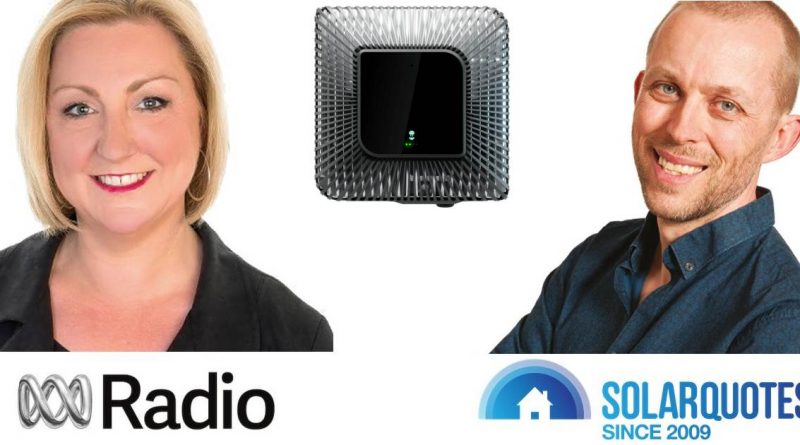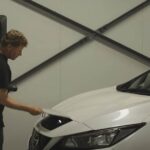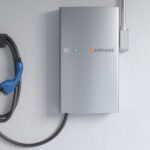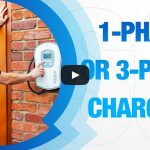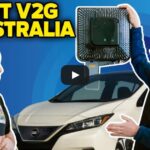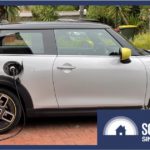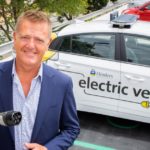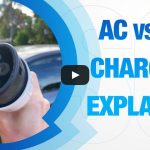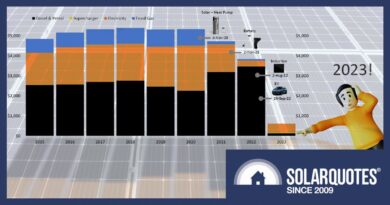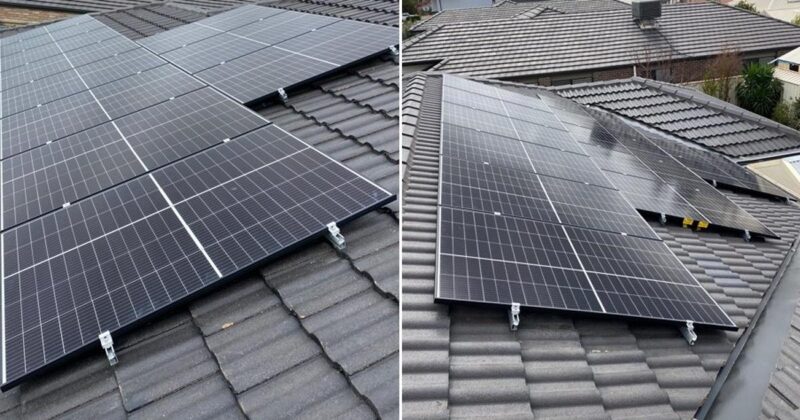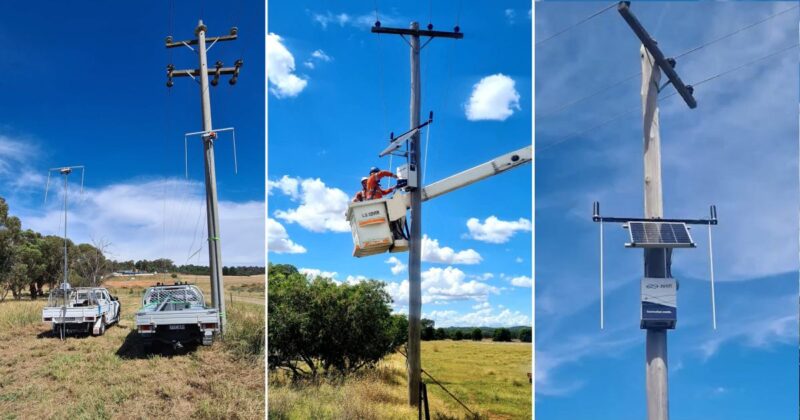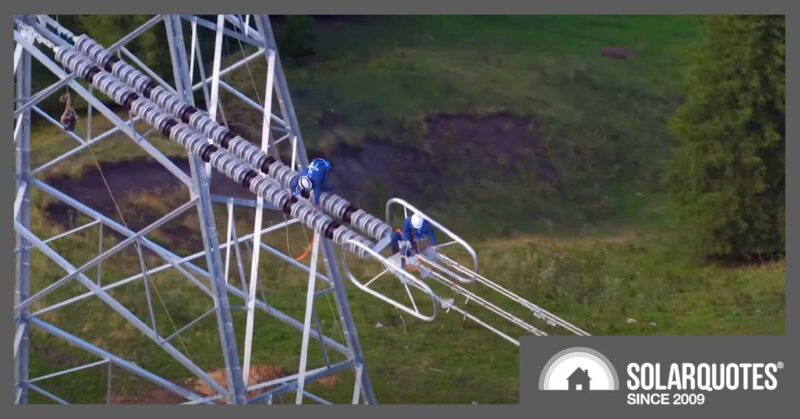EV Bi-Directional Chargers Will Enable Home Batteries On Wheels
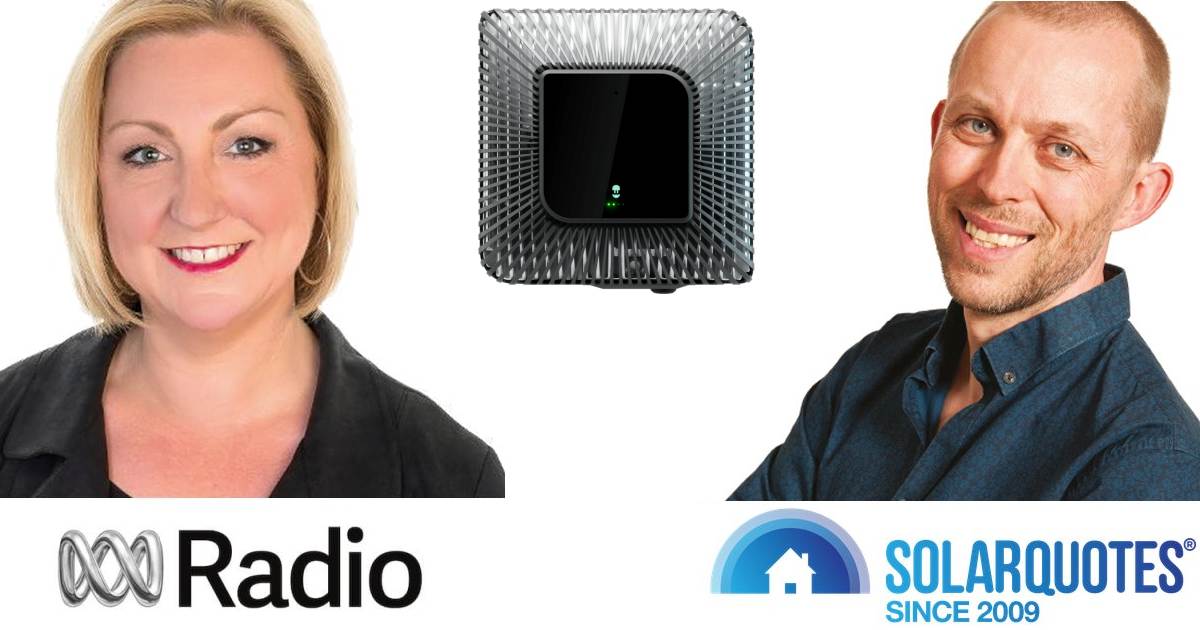

SolarQuotes founder Finn Peacock recently chatted with ABC Radio Adelaide’s Sonya Feldhoff about the potential for big home batteries on wheels – electric cars – and the role of bi-directional chargers.
A typical home battery stores around 10 kilowatt-hours of energy, whereas an electric car generally has between 50 – 100 kilowatt-hours of storage capacity. The interesting thing is the price based on kilowatt-hours of storage for both is around the same in some instances. In the case of buying an EV, it’s almost like paying for the battery and getting the rest of the car thrown in for free.
“So, if you have this enormous battery sitting on your driveway, why not use it to power your home when either the grid goes down, or when at times of day when electricity can be really expensive,” says Finn.
… and of course, general use at night or whenever.
Stopping this from happening to date is the lack of suitable equipment approved for use in Australia and electric car compatibility for the application. Enter smart bi-directional chargers, which tackle one aspect.
Conventional electric car chargers only operate one-way – from the charging source to the EV. But on Monday, ABC Science reported bi-directional EV chargers for V2G (Vehicle To Grid) and V2H (Vehicle To Home) applications will finally arrive in Australia “within weeks“.
ABC reported the Wallbox Quasar will be the first bi-directional charger to go on sale in Australia. This single-phase charger offers up to 7.4 kW of power for charging or discharging and is compatible with CHAdeMO (CHArge de MOve) charging cables.
Among the EVs using CHAdeMO are the Nissan Leaf, Toyota Prius Plug-In, Tesla Model S and X ( adapter required), Kia Soul EV Mk1 and a couple of Citroen models. Some of these vehicles are not yet available in Australia and only a couple appear to offer V2H/V2G support, such as the Nissan Leaf.
There’s also been chatter over the last couple of years of CHAdeMO going the way of the dodo. But last month Wallbox announced the introduction of Quasar 2, boasting 11.5kW power and CCS compatibility, which is more widely used. However, it seems it’s only for the North American market at this point.
Battery Wear And Tear
Sonya relayed a question from a listener who asked if using an EV battery to power a home would wear the battery out quicker.
“Batteries do wear out faster the more you use them – that’s the bad news,” says Finn. “The good news is most batteries made after about 2014/2015 are massively more durable than the ones made before that. So, it’s becoming less of a problem and I suspect – if we’re not there already – it will soon be negligible how much extra wear and tear that kind of use puts on a battery.”
Free Fill Ups
One listener pointed out you could charge your EV at one of the many free charging stations that have popped up and then run your house from the car battery. Finn said he already makes use of free charging stations for his family’s electric vehicles (Electric Mini and a Tesla Model S) and suspects this won’t last as more Australians get electric cars.
Fire Risk?
On a related note, in the early hours of Sunday morning, a fire broke out in a house in Adelaide’s northern suburb of Burton. The culprit appears to be have been a malfunctioning solar battery – so, not an EV battery.
Thankfully, no-one was injured, but the damage bill has been estimated at $200,000. When asked about the fire early on in the segment, Finn said he considered solar batteries to generally very safe.
Finn noted Australia has been on the front-foot with home battery safety. Australian Standard 5139, which came into play in 2019, is very strict on how batteries are installed – and where they can be installed.
“Lots of people in the industry, including me, complained a lot when it came out because it was so restrictive,” says Finn. “But when things like this happen you realise that actually these standards are very good and will help when this does happen – which hopefully will be very rare – it will minimise damage caused”.
A listener asked about the fire risk in relation to EV batteries.
“Electric cars do occasionally catch fire, that’s the truth. But the good news is they are much less likely to catch fire than a conventional car,” said Finn. “If you think about it, a conventional car has got 50 litres of explosive liquid sloshing around in the tank – and every now and then they do catch fire”.
Bi-Directional EV Charger Cost
One-way chargers such as the Zappi are pretty cheap these days – around $1,000 – $1,500 dollars. At $10,000 (reportedly) for the Wallbox Quasar, this new bi-directional EV charger is pretty pricey.
“As with all technologies, if it becomes ubiquitous, that cost will come down very quickly,” said Finn.
He expects bi-directional EV chargers to come down to around $1,000 – $2,000 as they become more popular. This is the same general range as a solar inverter – which does a similar job of transforming DC electricity from solar panels into AC electricity suitable for use in the home and exporting to the mains grid.
Rebates?
Sonya asked Finn whether the Wallbox Quasar will be eligible for EV charger rebates available in South Australia.
Finn said those rebates are earmarked for one-way smart chargers that can be instructed when to charge and when not to.
“It will be a problem if lots of people in South Australia buy electric cars and they all plug them into “dumb” chargers at 5,6 o’clock in the evening; because that is the worst time for the grid – during highest demand. They want to solve that problem by having chargers that even when you plug them in when you get home at 5 or 6 o’clock; they won’t switch on until about 10 o’clock, 11 o’clock at night.”
DNSP Permission
A listener asks whether a Distributed Network Service Provider (DNSP) could refuse permission to install a bi-directional charger.
“Yes they can,” says Finn. “Because essentially it’s just like a big home battery that will be plugged into the grid. In South Australia, you would need permission from SA Power Networks.”
Permission would be based on a number of factors, such as the condition of the local grid and system setup – the primary concern being if you were exporting energy into the grid and whether the local grid could handle that.
If a charger had the capability of selling electricity into the grid, that could make a big difference. All else being up to scratch, it would be hard for DNSPs to refuse permission if configuration prevented exports – and in fact, home-connected EV batteries could help support grid stability.
You can catch the full ABC Radio Adelaide’s Afternoons with Sonya Feldhoff segment here (starts at 19 minutes in and runs for around 20 minutes).
Related: Home Owner’s Guide To Solar Power And Electric Cars.
Original Source: https://www.solarquotes.com.au/blog/bidirectional-ev-charger-mb2357/

